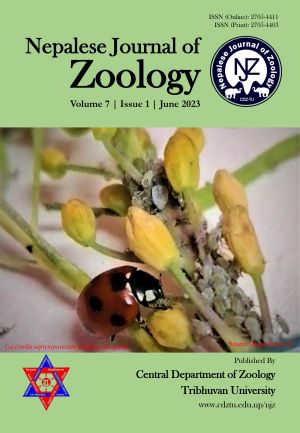Poisoned baits pose a threat to vultures in Nepal
DOI:
https://doi.org/10.3126/njz.v7i1.56306Keywords:
Collateral deaths, Diclofenac, Endangered birds, Himalayan griffon, NSAIDsAbstract
Poisoning is the greatest threat to vultures globally. Asia’s vultures were driven to near extinction through poisoning by the veterinary non-steroidal anti-inflammatory drug (NSAID) diclofenac. Since the ban on the veterinary use of diclofenac in Nepal in 2006, there has been a partial recovery of vulture populations in the country. However, other threats are emerging, including other vulture-toxic NSAIDs, as well as other forms of unintentional poisoning. The use of poison baits, whereby animal carcasses are laced with poison to target carnivores, often results in the collateral deaths of vultures. Here, we summarize the data on the number of such poisoning incidents, and the number of vultures killed, between 2011 and 2023. A total of 224 vultures of seven species were found dead at 22 poisoning incidents across the country. Himalayan griffons accounted for over half of the fatalities (n = 108), along with 93 White-rumped vultures and small numbers of four other species. We recommend that conservationists raise the awareness of this issue with local stakeholders, and try to devise mitigation measures to reduce the threat of poisoning to vulture population.
Downloads
Downloads
Published
How to Cite
Issue
Section
License

This work is licensed under a Creative Commons Attribution-NonCommercial 4.0 International License.
This license enables reusers to distribute, remix, adapt, and build upon the material in any medium or format for noncommercial purposes only, and only so long as attribution is given to the creator.

